Canada Car Engine for Export: A Comprehensive Guide to Cross-Border Vehicle Trade
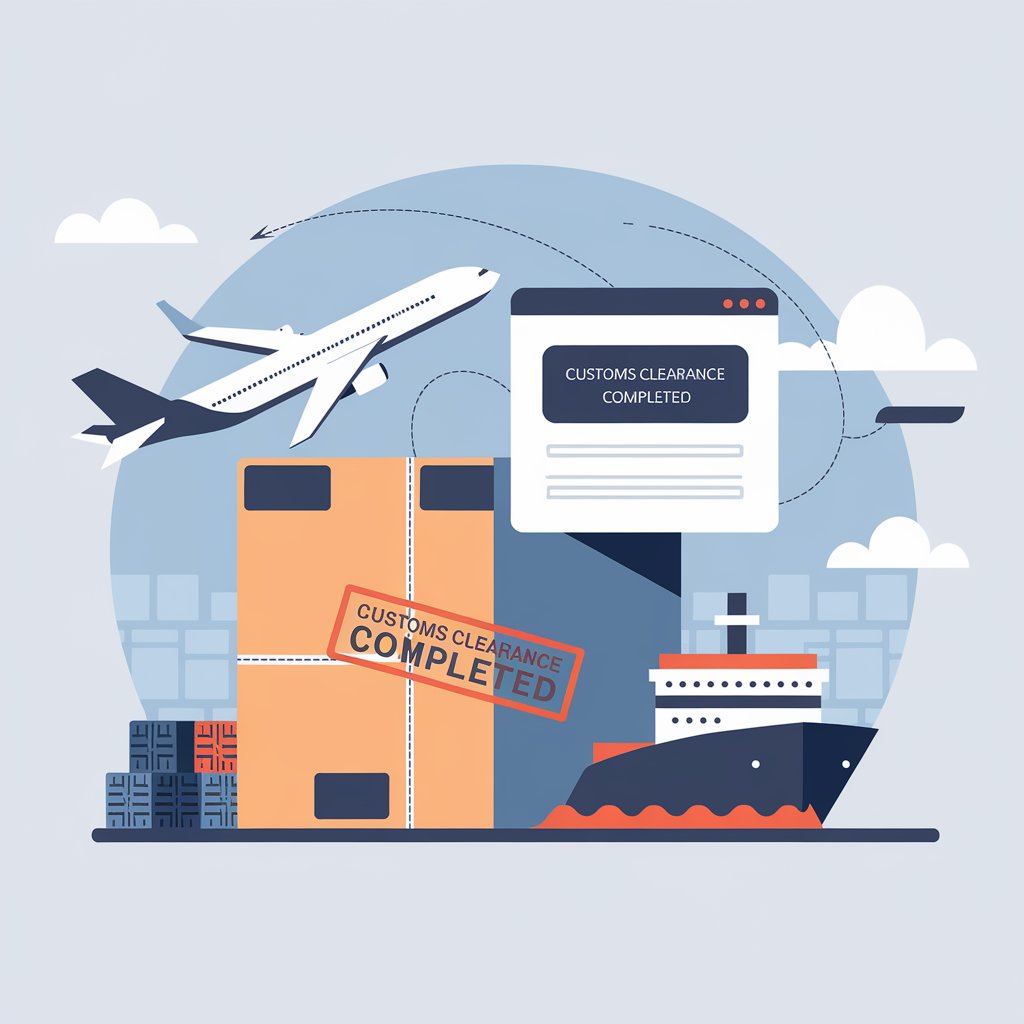
Canada Car Engine for Export: Understanding the Market
Canada has a robust automotive manufacturing sector, producing high-quality engines for various vehicle types. The export of these engines to the United States and other countries represents a significant portion of Canada’s automotive trade.
Key Points for Engine Export:
- Quality Standards: Canadian engines meet strict quality and emissions standards.
- Compatibility: Many Canadian engines are compatible with US vehicle models.
- Export Documentation: Proper paperwork is crucial for smooth customs clearance.
Engine Export Canada: Process and Regulations
When exporting car engines from Canada, several steps and regulations must be followed:
- Classification: Determine the correct HS (Harmonized System) code for the engine.
- Export Permits: Check if any special permits are required for engine export.
- Customs Documentation: Prepare all necessary customs forms and commercial invoices.
- Shipping Arrangements: Choose between air, sea, or land transportation methods.
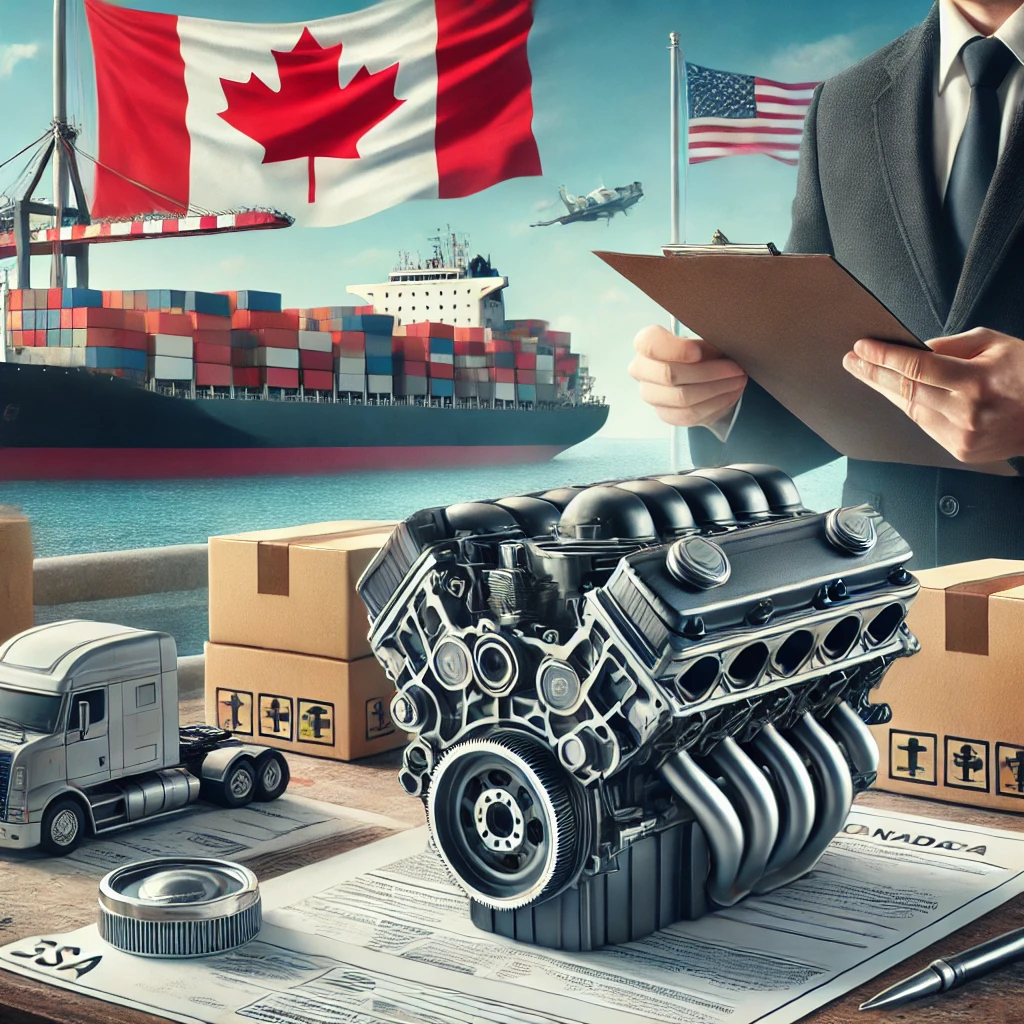
Importing Canadian Registered Cars to Washington State
For those interested in importing entire vehicles, the process of bringing Canadian cars into the US, particularly Washington State, involves several steps:
- Vehicle Eligibility: Ensure the vehicle meets US import requirements.
- Customs Clearance: Complete necessary customs procedures at the border.
- Washington State Import Car Laws: Familiarize yourself with specific state regulations.
- Emissions and Safety Standards: Verify compliance with US standards.
Washington State Import Car Laws
Washington State has specific requirements for importing vehicles:
- Emissions testing may be required depending on the vehicle’s age and type.
- Vehicles must meet Federal Motor Vehicle Safety Standards (FMVSS).
- Proper documentation, including title and registration, must be provided.
Canadian Import Car Laws
Understanding Canadian import car laws is crucial for those looking to bring vehicles into Canada:
- RIV (Registrar of Imported Vehicles) Program: Most vehicles must be registered with RIV.
- Modifications: Some US vehicles may need modifications to meet Canadian standards.
- Duties and Taxes: Be prepared to pay applicable duties and taxes.
Differences Between Canadian Cars and American Cars
While Canadian and American vehicles share many similarities, there are some notable differences:
- Speedometer and Odometer: Canadian vehicles typically display kilometers, while US vehicles show miles.
- Daytime Running Lights: Required in Canada but not in all US states.
- Bilingual Labels: Canadian vehicles often have bilingual (English and French) warning labels.
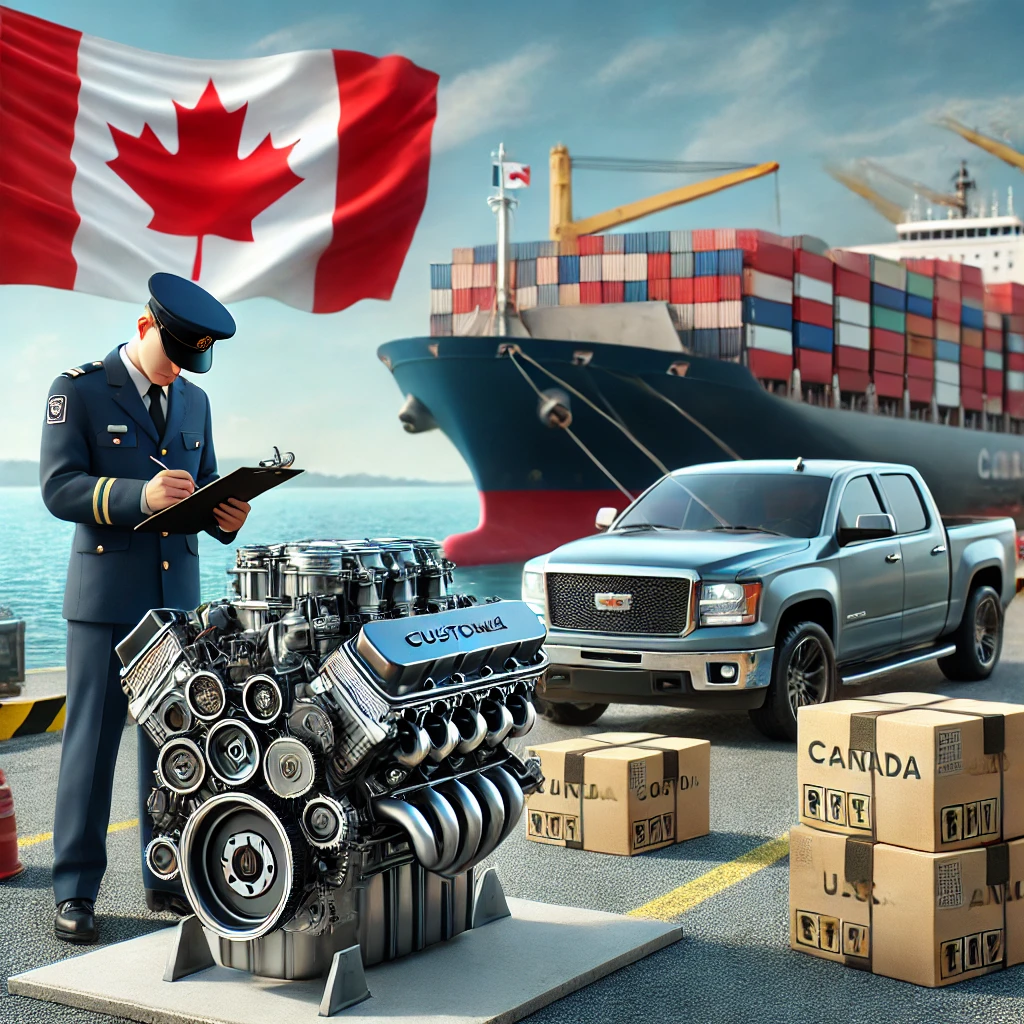
Importing a Car from Canada to US: Step-by-Step Guide
- Research: Ensure the vehicle is eligible for import (must be at least 25 years old if not compliant with US standards).
- Documentation: Gather all necessary paperwork, including the title and Canadian registration.
- US Customs: File Form 7501 (Entry Summary) and pay any applicable duties.
- EPA and DOT Requirements: Ensure compliance with environmental and safety standards.
- State Registration: Complete state-specific registration and potentially emissions testing.
Importing Truck from Canada to USA
The process for importing trucks is similar to cars, with a few additional considerations:
- Weight and Size Regulations: Ensure compliance with US truck size and weight limits.
- Commercial vs. Personal Use: Different rules may apply based on the truck’s intended use.
Costs Associated with Vehicle Import/Export
Several costs should be considered when engaging in cross-border vehicle trade:
- Shipping Costs: Vary based on method (e.g., driving across the border, professional car shipping).
- Duties and Taxes: Depend on the vehicle’s value and classification.
- Modification Costs: Expenses for any required vehicle modifications.
Inspection Fees: Costs for necessary inspections and emissions tests.
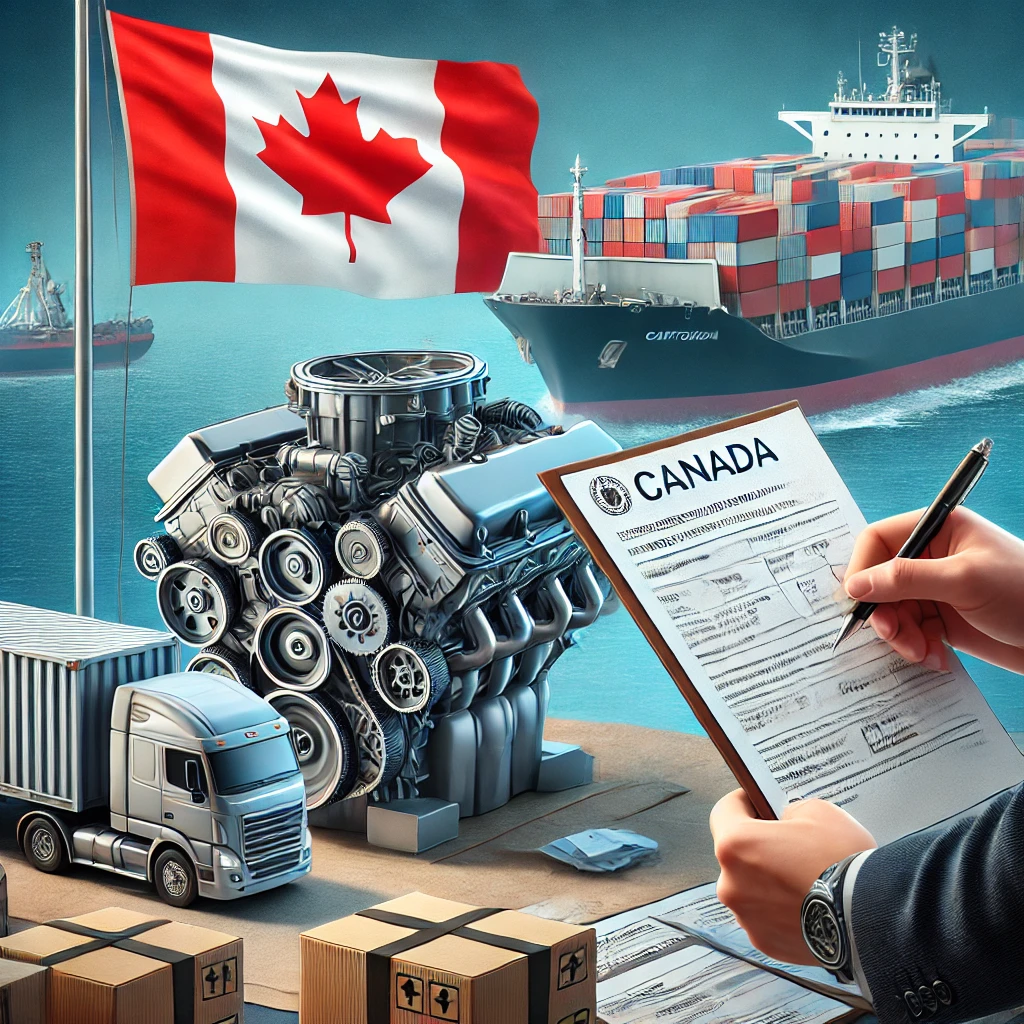
HS-7 Form: A Crucial Document for US Vehicle Imports
The HS-7 form is a critical document when importing vehicles into the US:
- It declares the vehicle’s eligibility for import.
- Different boxes on the form correspond to various import scenarios.
- Accurate completion is essential to avoid delays or rejections.
The 25-Year Rule for US Car Imports
The US has a significant exemption for older vehicles:
- Vehicles 25 years or older are exempt from many import restrictions.
- This rule has led to a niche market for importing classic Canadian vehicles to the US.
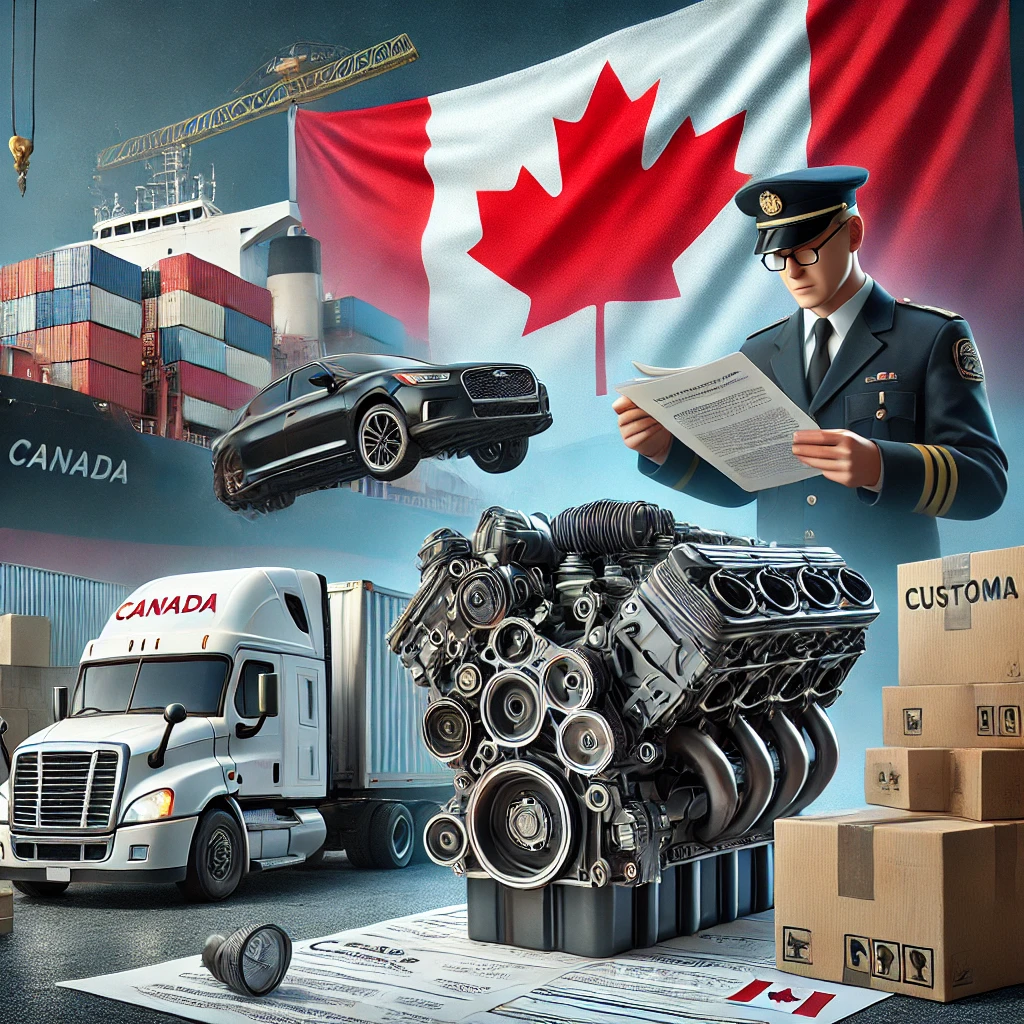
Conclusion: Navigating the Complexities of Cross-Border Vehicle Trade
Whether you’re exporting a Canada car engine, importing a vehicle from Canada to the US, or vice versa, understanding the regulations and processes is crucial. From Washington State import car laws to Canadian import requirements, each aspect of cross-border vehicle trade comes with its own set of rules and considerations.
By thoroughly researching the requirements, preparing the necessary documentation, and potentially seeking professional assistance, you can navigate these complexities successfully. Remember that regulations can change, so always verify the most current information with official sources before proceeding with any import or export activities.
Whether you’re a car enthusiast looking to import a unique Canadian vehicle, a business engaged in engine export, or an individual moving between countries with your vehicle, this guide provides a solid foundation for understanding the intricacies of Canada-US automotive trade.
